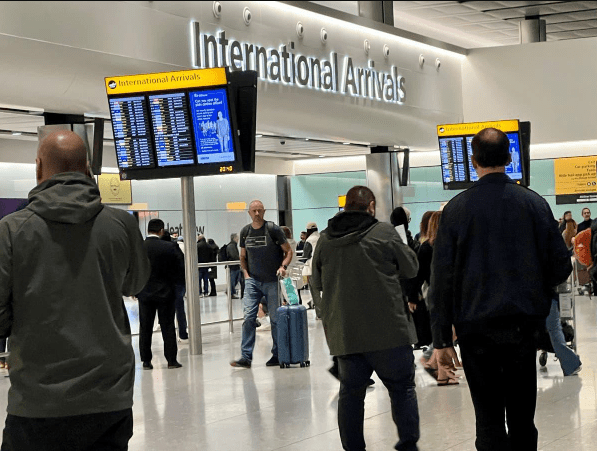One of the most critical construction mishaps in recent UK history unfolded beneath the runways of Heathrow Airport, shaking the capital’s infrastructure to its core.
What began as a bold engineering feat to connect the airport to Central London via the Heathrow Express, turned into a near-catastrophe that almost crippled the Piccadilly line and threw the future of the Jubilee Line extension into doubt.
The Heathrow Express project, launched to streamline travel between Paddington and Heathrow, involved an ambitious tunnelling effort beneath West London.
Engineers planned to bore two tunnels, each stretching around five miles, linking Paddington to Heathrow Central and Terminal 4.
But in the early hours of Friday, October 21, 1994, everything went awry. The first tunnel collapsed. Over the next three days, the situation deteriorated rapidly. Sinkholes began to appear.
Buildings near the airport were compromised. The ground between Heathrow’s two runways gave way, forming a giant crater.
The Underground’s Piccadilly line, which runs directly beneath the airport, faced imminent peril.
As revealed during court proceedings at the Old Bailey, the collapse might have “unzipped” the line, putting lives at grave risk.
The potential for disaster was so severe that an emergency concrete plug had to be installed to prevent the collapse from advancing any further – just 20 metres from the Piccadilly tunnels.
Remarkably, no one was killed. Construction workers managed to flee within moments of the initial failure. Yet the chaos brought Heathrow Airport to a standstill for several days.
Although lives were spared, the financial toll was staggering. The emergency repairs cost an estimated £150 million – nearly three times the original project budget.
The fallout was swift. Contractors Balfour Beatty and tunnel designers Geoconsult were heavily fined – a combined £1.7 million, at that time the largest health and safety penalty ever issued in the UK.
The method used in the tunnelling, known as sprayed concrete lining (SCL), was scrutinised. This technique, which involves spraying fast-setting concrete onto newly excavated tunnel walls, is still in use today for major infrastructure projects like Crossrail and the Northern line extension.
However, the Health and Safety Executive criticised the way it was applied at Heathrow. The court heard that those overseeing the project prioritised speed and outcomes over safety. Balfour Beatty pleaded guilty to failing to protect both workers and the public.
Following the incident, construction was suspended for a full year. A thorough reassessment followed. Ultimately, the project was completed and services began in 1998, successfully cutting the travel time between Paddington and Heathrow to just 15 minutes.
A disaster narrowly avoided. But its legacy still echoes through the annals of British engineering – a stark reminder of what can happen when ambition overtakes caution.






